PHILIPPINES
(Updated 2018)
PREAMBLE
This report provides information on the status and development of nuclear power programmes in the Philippines, including factors related to the effective planning, decision making and implementation of the nuclear power programme that together lead to safe and economical operations of nuclear power plants.
The CNPP summarizes organizational and industrial aspects of nuclear power programmes and provides information about the relevant legislative, regulatory and international framework in the Philippines.
Completed in May 1984, the Philippines preserves and maintains a nuclear power plant which was never operational after the government decided to mothball the facility. The Philippines is considering a revival of its nuclear power development programme under the current administration.
1. COUNTRY ENERGY OVERVIEW
1.1. ENERGY INFORMATION
1.1.1. Energy policy
Since the path of energy security cannot rely on one option only, the Philippine Energy Plan (PEP) has adhered to a technology neutral stance in developing the energy sector. Below are the plans for the 20 year planning horizon.
Exploration/Development of Conventional Fuels
The country’s conventional energy fuels — oil, gas and coal — will continue to remain indispensable in meeting the country’s energy demand even as the country pursues other alternative energy sources.
Oil and Gas
For fossil fuels such as oil and gas, the target production level at the end of the planning horizon is 78.59 million barrels. Service contracts, which to date total about 34 million barrels, will increase 40% through the planning period. The country has 16 sedimentary basins and the majority of these areas are found in Luzon, particularly in Palawan.
Coal
Indigenous coal production will increase to a high of 250% with the entry of more investors through energy contracts round mechanisms and the conversion of existing coal operating contracts, from exploration to development stage.
Currently, the country imports around 75.4% of domestic coal requirements.
Renewable Energy
Renewable energy development was given a tremendous boost with the passage of the Renewable Energy Act of 2008. Since its signing, 206 contracts have been signed. The target is to double the renewable energy based installed capacity to power generation at the end of the planning horizon from its 2008 level of 5300 MW.
In the case of geothermal, a comparatively more advanced resource, the targeted installed capacity will increase from 1972 MW to over 3000 MW at the end of the planning horizon, to boost the country’s leadership in geothermal energy development worldwide.
Nuclear
Worldwide, there is a revival of interest in nuclear energy as an alternative energy source. As early as 2010, the secretaries of the Department of Energy and the Department of Science and Technology jointly created an inter-agency task force to exactly determine the feasibility of considering nuclear energy as a long term option in the country. The task force validated the results of the Bataan nuclear power plant (BNPP) feasibility study in 2009, with the major deliverable of a memorandum of understanding (MOU) between the National Power Corporation (NPC) and Korea Electric Power Corporation (KEPCO). It also undertook a site safety review of the BNPP. A study on the competitiveness of nuclear power against other fuel sources will also be conducted and, in the meantime, the country is availing itself of local and foreign avenues to capacitate its workforce through various training programmes.
Promoting Responsible Use of Energy
The government is developing opportunities to make realistic changes in the way the country uses its energy resources. An energy conservation programme and technologies will help Filipinos become more efficient consumers of energy. The energy efficiency programme aims to achieve a 10% energy savings on the total annual demand of all economic sectors.
Other programmes for implementation are the monitoring of efficient performance for power generation at utilities and electricity distribution facilities, promotion of aviation fuel efficiency enhancement, retrofit of commercial and industrial establishments and voluntary agreement programmes on the rationalization of the transportation sector operation.
Energy Sector Strategic Directions
In line with President Rodrigo R. Duterte’s ‘Ambisyon Natin’ 2040 (Long term vision), which envisions a “strongly rooted, comfortable and secure life” for all Filipinos by the year 2040, the Department of Energy (DOE) proposed eight Energy Sector Strategic Directions (ESSDs) to set the tone of the department’s policy track over the next 22 years.
Under the guidance of the ESSDs, the DOE aims to achieve the following indicative targets that have been set forth in its nine point energy agenda:
Basic electricity access for all Filipinos by 2022;
Adoption of a technology neutral approach to achieve an optimal energy mix;
Improvement of power supply reliability to meet demand needs by 2040;
Development of liquefied natural gas (LNG) in anticipation of the forthcoming depletion of the Malampaya gas field;
Facilitate the completion of transmission projects by 2020;
A pro-consumer distribution framework for affordability, choice and transparency;
Streamlining domestic policy to cut red tape;
Privatization of the Power Sector Assets and Liabilities Management Corporation;
Promotion of efficient energy use among consumers through information, education and communication (IEC) campaigns.
Executive Order No. 30
A landmark development in the energy sector is the issuance of Executive Order No. 30 on Creating the Energy Investment Coordinating Council (EICC) to Streamline the Regulatory Procedures Affecting Energy Projects, signed by President Duterte on 28 June 2017.
The DOE is at the forefront of the EICC to ensure the efficient and effective implementation of energy projects classified as of national significance. Government agencies are now required to act upon major energy project applications within a 30 day period. In addition, “the presumption of prior approvals” expedites the previously tedious procedure by allowing agencies to process said applications without waiting for the action of other government agencies.
Philippine Energy Plan 2017–2040
The Philippine Energy Plan (PEP) 2017–2040 is the DOE’s blueprint to secure the country’s energy future. It was created after a thorough review of the current energy agenda and the inclusion of inputs from regional consultations and IECs conducted by the department. The formulation of the PEP paved the way for the identification of sectoral energy road maps vital to increased energy access and security.
By 2040, the PEP sectoral road maps intend to:
Increase the renewable energy installed capacity to at least 20 000 MW;
Increase reserves and production of local oil, gas and coal;
Deliver quality, reliable, affordable and secure power supply; expanded access to electricity; and a transparent and fair power sector playing field;
Provide nationwide electricity access;
Improve downstream oil industry policies for the continuous supply of high quality and quantity petroleum products;
Establish a world class and investment driven natural gas industry in the Philippines;
Secure a stable energy supply through a technologically responsive energy sector;
Reduce energy intensity and consumption.
The PEP will likewise be the basis for the certification of energy projects of national significance, as provided for in Executive Order No. 30.
Source: Energy Annual Report 2017, Department of Energy.
Using Energy in an Environmentally Responsible Manner (Climate Change Adaption Measures)
The Philippines, like the rest of the world, is facing a moment of decision in terms of using energy in a more environmentally friendly way. Fully aware of the role and responsibility of the energy sector in helping mitigate the impact of climate change, the plan is to introduce the pursuit of adaptation strategies, among which are the following:
To conduct an impact and vulnerability assessment of energy systems such as power generation, transmission and distribution;
Fuel production and transport in the immediate term;
Integration of structural adaptations into the design of energy infrastructures to include modification of engineering design practices and integration of climate change adaptation to energy policies, plans and programmes, including laws and regulations.
Source: Department of Energy (DOE) Portal (www.doe.gov.ph).
The energy policy reflects the state’s commitments to pursue an energy independence agenda under the Government’s five point reform programme package as shown in Fig. 1. The first objective is anchored on the effective implementation of the following goals:
Accelerating exploration, development and utilization of indigenous energy resources;
Intensifying renewable energy resource development;
Increasing the use of alternative fuels;
Enhancing energy efficiency and conservation.
Also, the continuing reforms in the power sector, as well as the downstream oil and gas industries, will pave the way in realizing a globally competitive Philippine energy sector.
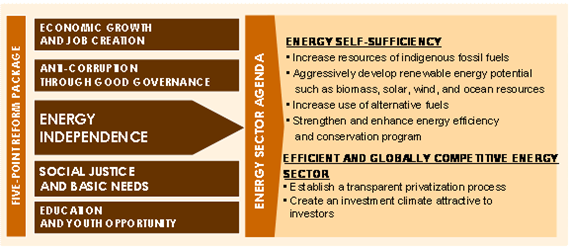
FIG. 1. The Philippines’ five point reform package.
1.1.2. Estimated available energy
TABLE 1. ESTIMATED AVAILABLE ENERGY SOURCES (2012–2030)
| Estimated available energy source | ||||||
| Fossil fuels | Nuclear | Renewables (2017) | ||||
| Solid |
Liquid | Gas | Uranium | Hydro | Other Renewables | |
| Total amount in specific units | 250.04* MMT with 10 000 BTU/lb | 106.3* MMB | 2 840.91* BCF | No available data | 9 605 GWh | 13 578 GWh |
| Total amount in exajoules (EJ) | 7.33 | 0.65 | 29.97 | 0.0345 | 0.0489 | |
MMT: million metric tonnes; BCF: billion cubic feet; MMB: mega barrels.
* Proven reserves as of 31 December 2015.
Source: Philippine Energy Sector Plans and Programmes 2013–2030; Department of Energy
Energy Planning Study and Pre-Feasibility Study, DOE.
1.1.3 Energy Statistics
TABLE 2. ENERGY STATISTICS
| Compound annual growth rate (%) |
||||||
| Energy consumption (EJ)** | 2000 | 2005 | 2007 | 2009 | 2014* | 2000–2009 |
| - Total | ||||||
| Solids*** | 0.257 | 0.295 | 0.299 | 0.337 | 2.75 | |
| Liquids | 0.63 | 0.60 | 0.59 | 0.59 | –0.65 | |
| Gases, petajoules (PJ) | 0 | 0.12 | 0.14 | 0.15 | 0 | |
| Nuclear | — | — | — | — | — | — |
| Hydro | 0.028 | 0.030 | 0.031 | 0.035 | 0.033 | 1.07**** |
| Other renewables | 0.0003 | 0.00074 | 0.00093 | 0.0010 | 0.0013 | 10.32**** |
| Energy production | 2010 | 2011 | 2012 | 2013 | 2014 | 2010–2014 |
| - Total | ||||||
| Solids*** | 0.0397 | 0.0927 | 0.1095 | 0.1517 | 39.81 | |
| Liquids | 2.57 | 41.36 | 36.28 | 51.27 | 111.34 | |
| Gases, petajoules (PJ) | 0 | 0.12 | 0.14 | 0.15 | 0 | |
| Nuclear | — | — | — | — | — | — |
| Hydro | 0.028 | 0.030 | 0.031 | 0.035 | 0.033 | 3.34 |
| Other renewables | 0.0003 | 0.00074 | 0.00093 | 0.0010 | 0.0013 | 34.08 |
| Net import (Import–Export) | ***** | ***** | ***** | ***** | ***** | |
| - Total | — | |||||
*Latest available data.
**Energy consumption = Primary energy consumption + Net import (Import–Export) of secondary energy.
***Solid fuels include coal, lignite.
**** Calculated for 2000–2014.
—: Data not available.
Source: Department of Energy, www.doe.gov.ph
1.2. THE ELECTRICITY SYSTEM
1.2.1. Electricity policy and decision making process
The Philippine Distribution Code establishes the basic rules, procedures, requirements and standards that govern the operation, maintenance and development of the electricity distribution systems. The Philippine Grid Code and the market rules of the Wholesale Electricity Spot Market also aim to ensure the safe, reliable and efficient operation of the total electric energy supply system in the Philippines.
The Republic Act No. 9136, also known as the Electric Power Industry Reform Act of 2001, mandated the creation of the Energy Regulatory Commission (ERC). Section 43(b) of the act provides that the ERC promulgate and enforce a National Grid Code and a Distribution Code which shall include, but not be limited to: (a) performance standards for Transco O&M Concessionaire, Distributors and Suppliers; and (b) financial capability standards for the generating companies, Transco, distributors and suppliers. The act also mandates the ERC to enforce compliance with the Grid Code, the Distribution Code, and the market rules and to impose fines and penalties for any violation of their provisions.
The restructuring of the electric power industry in 2001 resulted in significant changes in distribution system operations and management. The act allows end users belonging to the contestable market to obtain power from suppliers who are licensed by the ERC. Distributors must provide wheeling services to these end users. Distributors must also procure energy from the Wholesale Electricity Spot Market and secure bilateral contracts to serve the remainder of the customers in their franchise area.
The distribution code defines the technical aspects of the working relationship between the distributors and all users of the distribution system. Distributors must deliver electric energy to the users at acceptable levels of power quality and customer service performance.
Source: Energy Regulatory Commission, Philippines.
1.2.2. Structure of electric power sector
Prior to 2001, the Philippine electric power industry was vertically integrated with the National Power Corporation (NPC) by maintaining a monopoly of all generation and transmission of electricity. Major reforms were implemented after the enactment of Republic Act No. 9136, otherwise known as the Electric Power Industry Reform Act or EPIRA of 2001. This law restructured the electricity supply industry by different components of the power sector and privatized the generation and transmission assets of the NPC. These two reforms are aimed at encouraging greater competition and attracting private sector investments in the power industry. A more competitive power industry will in turn result in lower power rates and a more efficient delivery of electricity supply to end users.
The current Philippine power industry is now divided into three major sectors: generation, transmission and distribution. Under the present power industry structure, generation and transmission are already handled by the private sector even as NPC continues to operate for and on behalf of the Power Sector Assets and Liabilities Management (PSALM) Corporation. The undisposed NPC generation assets which are mostly hydroelectric power plants on the southern island of Mindanao. Meanwhile, NPC also continues to operate and maintain small power plants in off-grid areas of the country.
The EPIRA Law of 2001 also created the National Transmission Corporation (Transco). Transco started operations as a functional unit of NPC and is wholly owned by the PSALM Corporation. On 1 March 2003, Transco started independent operations and took over the electrical transmission function of NPC. Following the mandate of EPIRA, the transmission business of Transco was privatized through a concession contract. PSALM and Transco entered into a concession agreement with the National Grid Corporation of the Philippines (NGCP) on 28 February 2008, granting the latter the right to take over and operate the whole of Transco’s regulated transmission business. Ownership of all transmission assets and related real properties remained with Transco. A congressional franchise to operate the transmission network was granted to NGCP on 8 December 2008.
Electricity at its usable voltage is distributed to end consumers by investor owned utilities and numerous electric cooperatives which sell to households as well as commercial and industrial enterprises located within their franchise areas at retail rates regulated by the Energy Regulatory Board (ERB). The Department of Energy (DOE) sets policy directions for the energy industry, while the national electrification administration provides financial and technical assistance to electric cooperatives.
Source: www.psalm.gov.ph
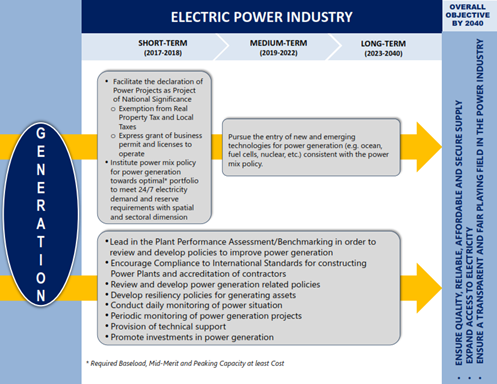
FIG. 2. Overall objective by 2040.
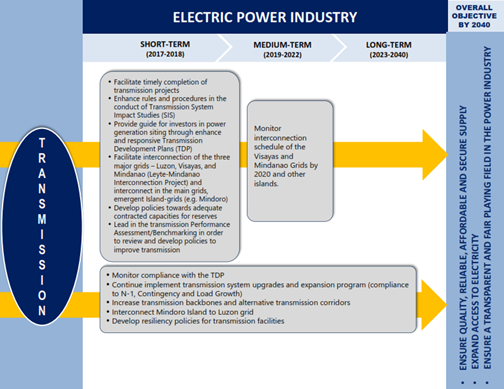
FIG. 3. Overall objective by 2040.
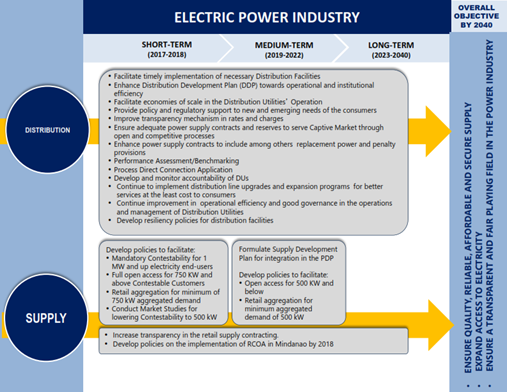
FIG. 4. Overall objective by 2040.
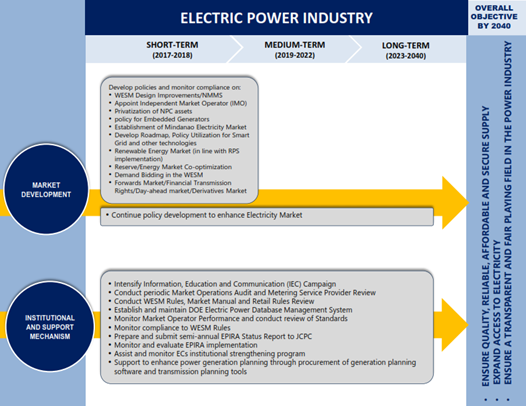
FIG. 5. Overall objective by 2040.
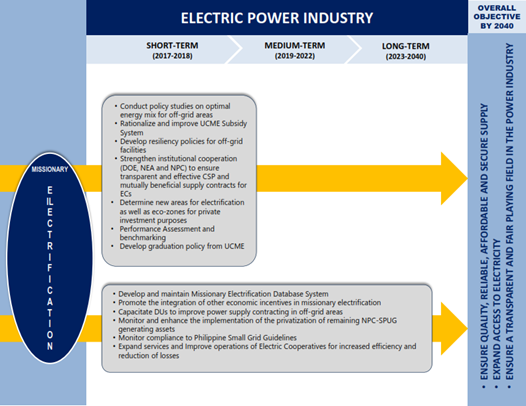
FIG. 6. Overall objective by 2040.
1.2.3. Main indicators
Power Supply Security and Reliability
The Philippine power supply and demand situation remained stable in the first quarter of 2016 despite the onset of a strong El Nińo, which generally resulted in increased peak demand levels across three main grids: Luzon, Visayas and Mindanao. On the supply side, hydro capacities (especially in Mindanao) decreased as a result of low water levels in Lake Lanao. Several yellow and red alerts were declared by a privately run system operator in Luzon and Visayas during the summer period of April 2016 to May 2016. However, the energy sector’s El Nińo mitigation measures alongside with the preparation for the 9 May 2016 national and local elections stabilized the power situation during the critical periods.
These measures include the activation of the interruptible load programme (ILP), ensuring minimal forced outages, management of power plant maintenance schedules and optimization of hydro capacities, specifically in Mindanao.
Total Electrification
Under Sec 2(a) of EPIRA 2001, it is the declared policy of the State to ensure and accelerate the total electrification of the country. Said law also mandates the distribution utilities to provide universal service in their franchise areas, including unviable areas, within a reasonable time.
The Government implemented massive and focused actions to increase and accelerate access to electricity services by the country’s non-electrified communities and households while contributing to poverty alleviation.
Previous Government programmes and activities resulted in almost 100% barangay (village/district) electrification, with only six barangays out of the total of 41 974 potential barangays remaining without electricity due to geographical and security reasons.
The expanded rural electrification programme integrated the rural and missionary electrification efforts of the Government in collaboration with the private sector, non-governmental organizations, and several donor funded projects with the view to achieving total barangay electrification by 2008 and 90% household electrification by 2017. The current programme of the government aims to provide all islands in the archipelago with 24/7 access to electricity by 2020.
Source: 30th Electric Power Industry Reform Act (EPIRA), Implementation Status Report (April 2017).
The other immediate measures that the government considered in order to address the short term supply gap were:
Interruptible Load Programme (ILP): Designed to entice greater participation from different distribution utilities with embedded generating capacities or those large users within their franchise having backup generating capacities to utilize such capacities. Under this programme, the distribution utilities with the approved Energy Regulatory Commission (ERC) where power rates will operate their embedded generating capacities, while the large users running their backup generator sets will be paid by the distribution utility within the franchise area. The reduction of the power load requirements of the distribution utilities with embedded generators will be transferred to other distribution utilities requiring additional supply.
Interim Mindanao Electricity Market (IMEM): The establishment of an electricity market in Mindanao is seen as a mechanism to provide for a central dispatch and price for available capacities. Transactions in the IMEM will only be undertaken during supply shortfall, while power generating companies with uncontracted capacities, distribution utilities and large users with available embedded generating capacities may nominate/bid to the IMEM their available capacities for dispatch at an approved bid price.
Power Generation
Gross electricity generation in 2017 went up by 3.93% from the previous year’s level of 90 798 GWh to 94 370 GWh.
Source: 2017 Philippine Power Statistics, Department of Energy, http://www.doe.gov.ph
TABLE 3. INSTALLED CAPACITY, ELECTRICITY PRODUCTION, CONSUMPTION
| Compound annual growth rate % |
|||||||
| Year | 1990 | 2000 | 2005 | 2010 | 2015 | 2017 | 2010–2017 |
| Capacity of electrical plants (GWe) | 6.87 | 13.18 | 15.62 | 16.36 | 18.76 | 22.73 | 4.20 |
| - Thermal | 3.14 | 4.99 | 3.66 | 3.19 | 3.61 | 4.15 | 3.34 |
| - Hydro | 2.15 | 2.30 | 3.22 | 3.40 | 3.60 | 3.63 | 0.82 |
| - Nuclear | 0 | 0 | 0 | 0 | 0 | 0 | 0.00 |
| -Renewables, wind, solar, biomass | 0.017 | 0 | 0.026 | 0.073 | 0.813 | 1.54 | 46.39 |
| - Geothermal | 0.89 | 1.93 | 1.98 | 1.97 | 1.92 | 1.92 | –0.32 |
| - Coal | 0.53 | 3.96 | 3.97 | 4.87 | 5.96 | 8.05 | 6.48 |
| -Natural gas | 0 | 0.003 | 2.77 | 2.86 | 2.86 | 3.45 | 2.37 |
| - Total | 6.87 | 13.18 | 15.62 | 16.32 | 18.76 | 22.73 | 4.20 |
| Electricity production (TWh) | 25.90 | 45.29 | 56.57 | 67.74 | 82.41 | 94.37 | 4.23 |
| - Thermal | 12.43 | 9.18 | 6.14 | 7.10 | 5.89 | 3.79 | –7.55 |
| - Hydro | 6.06 | 7.80 | 8.39 | 7.80 | 8.67 | 9.61 | 2.64 |
| - Nuclear | 0 | 0 | 0 | 0 | 0 | 0 | 0.00 |
| - Renewables, wind, solar, biomass | 0.043 | 0 | 0.019 | 0.090 | 1.25 | 3.31 | 56.93 |
| - Geothermal | 5.47 | 11.63 | 9.90 | 9.93 | 11.04 | 10.27 | 0.42 |
| - Coal | 1.93 | 16.66 | 15.26 | 23.30 | 36.68 | 46.85 | 9.12 |
| - Natural gas | 0 | 0.017 | 16.86 | 19.52 | 18.88 | 20.55 | 0.64 |
| Total electricity consumption (TWh) | 25.90 | 45.29 | 56.57 | 67.74 | 82.41 | 94.37 | 4.23 |
Notes: Electricity transmission losses are not deducted. Generation data include grid connected, embedded and off-grid generator. IPP generation included in the utility.
Source: Power Statistics, Department of Energy.
TABLE 4. ENERGY RELATED RATIOS
| 1980 | 1990 | 2000 | 2010 | 2013 | 2014 | |
| Energy consumption per capita (GJ/capita) | 19.80 | 19.41 | 21.48 | 18.18 | 19.14 | — |
| Electricity consumption per capita (kWh/capita) | 373.50 | 360.74 | 499.73 | 644.27 | 692.66 | 706.00 |
| Electricity production/Energy production (%) | ||||||
| Nuclear/Total electricity (%) | 0.00 | 0.00 | 0.00 | 0.00 | 0.00 | 0.00 |
| Ratio of external dependency (%) ** |
*Latest available data.
**Net import/Total energy consumption.
—: Data not available.
Source: data.worldbank.org/indicator
2. NUCLEAR POWER SITUATION
2.1. HISTORICAL DEVELOPMENT AND CURRENT ORGANIZATIONAL STRUCTURE
2.1.1. Overview
In 1958, the Philippine Atomic Energy Commission (PAEC) was established in accordance with Republic Act No. 2067, which was supported by then President Carlos P. Garcia.
In 1973, the Philippine economy was under a lot of pressure due to the oil crisis. With the intention of finding an alternative energy source, President Marcos decided in July of that year to construct a nuclear power plant (NPP) and workers started building the power plant in 1976. Construction was put on hold in 1979 due to the Three Mile Island accident in the United States of America (USA). The President of the Philippines issued Executive Order No. 539, creating a Presidential Commission (Puno Commission) to conduct an inquiry on the safety of the Bataan nuclear power plant. The BNPP was completed in 1984. Its construction cost the government US $2.3 billion. With its Westinghouse pressurized water reactor (PWR), BNPP was supposed to generate 621 MW of electric energy.
In 1986, the Marcos regime ended and Corazon C. Aquino became president. In April of that same year, the Chernobyl disaster occurred, which prompted the Aquino government to mothball the newly constructed NPP and not push through with its operation.
The succeeding administration was constrained to pay off the debt incurred for BNPP’s construction. They also tried to come up with ways to convert the NPP into a fossil fuel based energy source, but such plans were deemed economically infeasible. In 2008, an International Atomic Energy Agency (IAEA) eight man team inspected the BNPP for possible rehabilitation and came up with the following recommendations:
The power plant’s status must be thoroughly evaluated by technical inspections and economic evaluations conducted by a group of experts with nuclear power experience in preservation and management;
The IAEA mission advised the Government on the general requirements for starting its nuclear power programme with an emphasis on the proper infrastructure, knowledge and safety standards.
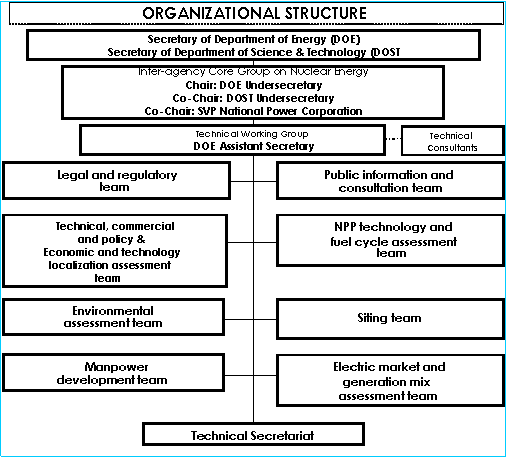
FIG. 7. Organizational structure.
In the late 1990s, development of the country’s nuclear power programme was vested under a Governmental ad hoc committee, whose organizational structure is shown in Fig. 7. By virtue of an interim departmental order between DOE and the Department of Science and Technology (DOST), this inter-agency Core Group on Nuclear Energy was created. Its prime objective is the development, management and setting up of policies and strategies which will involve nuclear power generation. Part of its mandate is the feasibility study for the possible re-operation of BNPP.
During the 15th Congress, then Representative Kimi S. Cojuangco filed House Bill No. 1291: “an act mandating an immediate validation process which satisfies internationally accepted nuclear power industry norms to determine the Bataan Nuclear Power Plant’s operability”, but the bill has not been acted upon.
In the 16th Congress (2013–2016), no bill was filed in the Lower House pertaining to the possible operation of the BNPP. Following this, then Senator Miriam Defensor-Santiago filed Senate Bill No. 580, known as the Bataan Nuclear Power Plant Operability Act, though it was not successful.
Currently, the NPC opens some portions of the BNPP to the public to create public awareness and provide educational information through technical briefings/audiovisual presentations and tours of the plant. The last quarter of 2016 saw renewed interest on the part of the Philippine Government under President Rodrigo R. Duterte for the inclusion of nuclear energy as part of the country’s energy mix.
This interest started with the Philippines hosting the IAEA International Conference on the Prospects of Nuclear Power in the Asia Pacific Region, spearheaded by the DOE from 29 August to 1 September 2016.
In October 2016, the DOE approved the creation of the Nuclear Energy Programme Implementing Organization (NEPIO) within the department.
The DOE, in partnership with the Philippine Nuclear Research Institute (PNRI), was able to request technical assistance from the IAEA to assess the feasibility of utilizing nuclear power in the country.
The IAEA launched a technical cooperation project, IAEA TC-PHl2011, Assessing the Development of a Nuclear Power Programme in the Philippines (Phase I).
Its main components are to develop the following:
Energy planning studies;
Self-assessment of nuclear infrastructure areas;
A communication plan for the public and stakeholder involvement;
A human resources plan.
The IAEA established a second technical cooperation project for the period 2018–2019, TCP-PHl2016003, Development of Nuclear Infrastructure in the Philippines (Phase II). It aims to provide support to the Philippine Government’s nuclear programme. The project’s main components include:
The development of nuclear infrastructure;
The enhancement of energy planning studies;
The development of a public communication strategy and capability to address negative perceptions on nuclear power.
To date, the department is carefully studying the country’s national position on nuclear energy in compliance with the IAEA’s primary key areas for nuclear infrastructure.
On determining a national position on the utilization of nuclear energy as part of the country’s energy mix, the DOE, NPC and PNRI embarked on a pre-feasibility study to determine if the BNPP can be rehabilitated. The study was made with the assistance of technical nuclear experts from the Republic of Korea in September 2017 and the Russian Federation in October 2017.
2.1.2. Current organizational chart(s)
PNRI is mandated to undertake research and development (R&D) activities in the peaceful uses of nuclear energy, to institute regulations on said uses and to carry out the enforcement of said regulations to protect the health and safety of radiation workers and the general public.
The DOE is the executive department of the Philippine Government responsible for preparing, integrating, coordinating, supervising and controlling all plans, programmes, projects and activities of the Government relative to energy exploration, development, utilization, distribution and conservation.
The National Power Corporation (NPC or NAPOCOR) is a government owned and controlled corporation that provides reliable power generation and its associated power delivery systems to ensure total electrification of areas while encouraging private sector participation; NPC manages its watershed and dam operations to support power generation; operates and maintains the Agus and Pulangi hydroelectric power plants; and adopts innovative power technologies and business processes to respond to customer needs.
NPC started to set up the initial organization and studies for the nuclear project implementation but the DOE has currently taken the reins in pursuing nuclear power development.
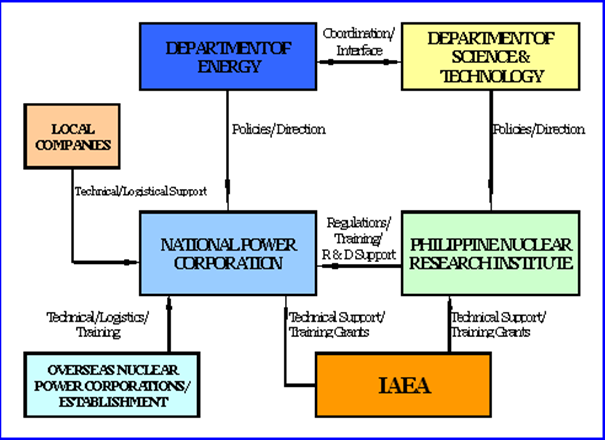
FIG. 8: National Power Corporation proposed nuclear organizational chart.
Sources: www.pnri.dost.gov.ph/
2.2. NUCLEAR POWER PLANTS: OVERVIEW
2.2.1. Status and performance of nuclear power plants
TABLE 5. STATUS AND PERFORMANCE OF NUCLEAR POWER PLANTS
| Reactor Unit | Type | Net Capacity [MW(e)] |
Status | Operator | Reactor Supplier |
Construction Date |
First Criticality Date |
First Grid Date |
Commercial Date |
Shutdown Date |
UCF for 2017 |
| BNPP-1 | PWR | 620 | Cancelled Constr. | RPNPC | WH | 1976-07-01 | 1986-05-01 |
| Data source: IAEA - Power Reactor Information System (PRIS). | |||||||||||
| Note: Table is completely generated from PRIS data to reflect the latest available information and may be more up to date than the text of the report. |
2.2.2. Plant upgrading, plant life management and licence renewal
The BNPP has been under shutdown/preservation since its completion in 1986 and a preservation team from NPC has been working to preserve the plant up to present.
Due to the need for a potentially cheap and safe power generation facility, the Philippine Government is considering the rehabilitation of the BNPP.
The Korea Electric Power Corporation (KEPCO) performed a feasibility study of the BNPP from February to April 2009. The plant was also evaluated by Rosatom of the Russian Federation and KHNP of the Republic of Korea in 2017.
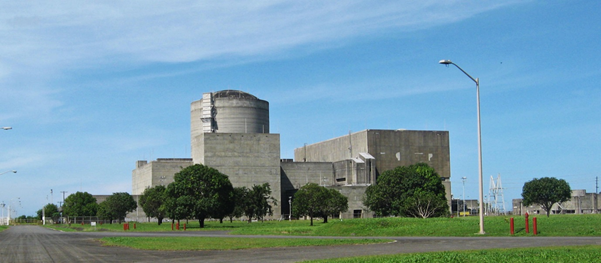
FIG. 9. Bataan nuclear power plant.
2.2.3. Permanent shutdown and decommissioning process
As a result of the Government’s decision to mothball the BNPP soon after it was completed, the BNPP was never operated. In fact, the nuclear fuel was never loaded into the reactor until it was sold off in 1997. The structure remains radiation free to this day.
TABLE 6: STATUS OF DECOMMISSIONING PROCESS OF NUCLEAR POWER PLANTS
Not applicable.
2.3. FUTURE DEVELOPMENT OF NUCLEAR POWER SECTOR
Not applicable.
2.3.1. Nuclear power development strategy
Since the creation of the DOE in 1992, only the PEP covering the planning period 1998–2035 has incorporated nuclear as a long term energy supply option. The 1998 plan forecast developed four scenarios to determine its sensitivity to different energy policy alternatives and the impact of regional cooperation programmes. Under the said plan, a 600 MW nuclear plant would be operational by 2025. Additional nuclear plant units, 600 MW each, were planned to be completed in 2027, 2030 and 2034. Thus, under the PEP 1998–2035, the total nuclear capacity was projected to reach 2400 MW by the end of the planning period.
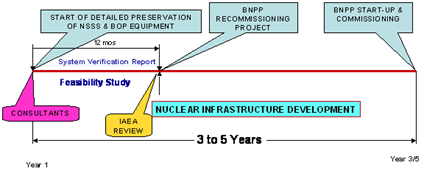
FIG. 10. Nuclear power development strategy.
Should it be decided to rehabilitate the BNPP, the contract for its recommissioning may be through a government to government arrangement. Meanwhile, long term storage of spent fuel on-site would be done, while the Philippines’ National Radwaste Repository Centre is constructed. A suitable site within the Philippines has already been identified for this centre.
TABLE 5. PLANNED NUCLEAR POWER PLANTS (PEP 1998–2035)
| Station/Project/Name | Type | Capacity | Expected construction start year |
Expected commercial year |
| BNPP | PWR | 620 MW | 1976 | Decommisioned |
| NPP 1 | PWR | 600 MW | 2015 | 2025 |
| NPP 2 | New Generation NPP | 600 MW | 2017 | 2027 |
| NPP 3 | New Generation NPP | 600 MW | 2020 | 2030 |
| NPP 4 | New Generation NPP | 600 MW | 2025 | 2035 |
At present, these plans have been shelved until the Philippine government comes up with its National Position on nuclear power generation.
Source: Philippine Energy Plan, 1998–2035.
2.3.2. Project management
In April 1986, the Philippine Government decided to mothball the BNPP and in May 1986, the contract with Westinghouse was suspended and the plant was placed under preservation.
Rene A.V. Saguisag, chair of the Bataan Nuclear Power Plant Committee (which was formed by the Philippine Government under President Aquino to look into the fate of the plant), officially informed the NPC in July 1986 that the Government would not operate the BNPP.
The BNPP was then transferred to the Philippine Government under Executive Order Nos 55 and 98, including its equipment, materials, facilities, records and uranium fuel, providing for the assumption of the remaining foreign loan obligations of the NPC with foreign lenders under the loans contracted by the NPC and guaranteed by the Republic of the Philippines and of the peso obligations incurred to finance the construction of BNPP by the Government and for other purposes ion November 1986. The plant’s short term preservation thus started.
In August 1992, a nuclear power plant preservation project was formed under the Special Projects Group of the NPC. From April 2003 until 22 March 2018, the plant was under the Asset Preservation Department headed by Mauro L. Marcelo Jr.
Effective 23 March 2018, the BNPP Preservation Group reports directly to Manuel Luis B. Plofino, senior department manager of the NPC’s Resource Management Service (RMS) after Mauro L. Marcelo Jr retired.
2.3.3. Project funding
Future nuclear power projects would be funded by an external financing organization in view of the huge capital cost necessary in putting up a new plant. Likewise, in the event that the BNPP is recommissioned, external funding may also be required. However, it is worthy to note that the recommissioning bill has made certain provisions in the electricity tariff as a source of funds for the BNPP.
2.3.4. Electric grid development
New high voltage transmission lines as well as a switchyard upgrade are necessary for the recommissioning of the BNPP, as well as for new power plants. The National Grid Corporation of the Philippines (NGCP) now manages, operates and maintains the Government’s transmission facilities and shall be responsible for making the necessary grid impact studies for possible nuclear plants in the future.
2.3.5. Sites
In 1998, the government created the Nuclear Power Steering Committee, to provide the direction of the country’s nuclear power programme during this period. It identified numerous possible sites throughout the country as future sites for NPPs, as shown in Fig. 11.
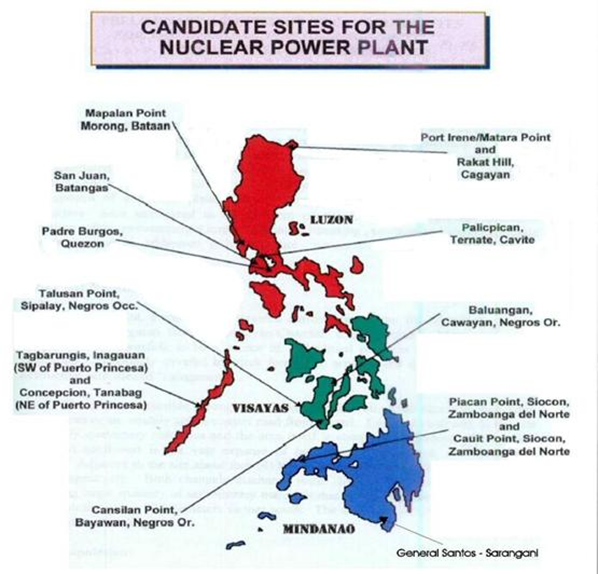
FIG. 11. Other candidate sites for the nuclear power plant.
All sites are located near the sea, which can provide abundant cooling water. Likewise, all identified sites are accessible by land transportation and within a reasonable distance of transmission lines.
2.3.6. Public awareness
The DOE together with the NPC and the PNRI are engaging in an IEC on power technology options.
Among its objectives are:
To consult the people living in the neighbouring area of the BNPP of their power plant preference and to complete profiling of such;
To inform and educate the people living in the neighbouring area of the BNPP on power plant technologies other than nuclear.
2.4. ORGANIZATIONS INVOLVED IN CONSTRUCTION OF NPPs
The NPC was slated to be the main player for nuclear plant operations based on existing laws and because of its vast experience in electric power generation and construction. It has its own engineering, technical services and project management organizations, which are well equipped to handle the pre-construction activities, construction stage, operation and maintenance and decommissioning of an NPP. However, the DOE, particularly the NEPIO created within said department, will now be the focal organization that will decide which Government agency will take the lead should the Government decide to build an NPP or rehabilitate the BNPP.
2.5. ORGANIZATIONS INVOLVED IN OPERATION OF NPPs
The NPC would be responsible for the operation of NPPs under current legislation, but the DOE shall determine policy changes in light of the industry changes since 2001 and draft the necessary legislation to support future NPP operations.
2.6. ORGANIZATIONS INVOLVED IN DECOMMISSIONING OF NPPs
For the decommissioning of NPPs, it will likewise be the responsibility of the DOE or the agency it will determine after appropriate legislation is enacted.
2.7. FUEL CYCLE, INCLUDING WASTE MANAGEMENT
For the country’s first operational NPP, the front end of the nuclear fuel cycle will be sourced through foreign expertise, similar to what was planned for the BNPP. The BNPP’s fuel supply contract with Westinghouse included mining and milling, uranium conversion and enrichment, up to fuel fabrication. The same scheme would be arranged for future new plants and the BNPP, should it be put into operation.
The new technology for on-site interim storage of spent fuel would be used until a firm Governmental decision is issued with regards to the future use of the spent fuel. For the BNPP, if put into operation, the storage facility will be set up.
Reprocessing is at present not among the priorities for the nuclear programme, however, should there be a decision on the reprocessing of spent fuel for conversion into fuel again, then it will be sent to a country where the industry is already in place or matured.
On the issue of waste management, the PNRI, through the technical and financial assistance of the IAEA, has already identified suitable sites within the Philippines as its National Radwaste Repository Centre. The centre is being set up for the long term storage of high level waste coming from hospitals, from the PNRI itself and from NPPs in the future.
2.8. RESEARCH AND DEVELOPMENT
2.8.1. R&D organizations
At present, the PNRI has the mandate on R&D in the field of nuclear sciences and technology. The country does not have any private institution that deals in this field. However, the pending bill in Congress on the reactivation of the BNPP has included provisions for nuclear R&D. Also, upon embarking on a nuclear power programme, the country’s science and technology industry will certainly add R&D on nuclear.
2.8.2. Development of advanced nuclear technologies
The country is not engaged in any advanced nuclear technology development.
2.8.3. International cooperation and initiatives
On an international level, the PNRI acts as the Government agency which represents the country as a Member State in the IAEA. The PNRI has cooperative agreements in nuclear technology with 16 other member states of the Regional Cooperative Agreement (RCA) for research, development and training related to nuclear sciences and technology for Asia and the Pacific. The PNRI partners with several organizations and entities such as the RCA Regional Office (RCARO), Forum for Nuclear Cooperation in Asia (FNCA), Comprehensive Nuclear Test Ban Treaty Organization (CTBTO) and other organizations from Australia, Canada, Japan, Republic of Korea, United States of America and other countries through bilateral agreements or institute to institute agreements.
2.9. HUMAN RESOURCES DEVELOPMENT
The present Government is putting a premium on human resources capability building and enhancement as a necessary prelude to considering nuclear power as a long term energy option. Capability building and enhancement of the various aspects of nuclear energy will involve training local wokers for the possible introduction of nuclear power into the country’s energy system.
Currently, the DOE, as the focal Governmental institution on the nuclear power programme, is leading an inter-agency discussion among the concerned Governmental organizations, the academy and private sector to flesh out the responsibilities of rebuilding local technical capability in nuclear sciences and engineering. Due to the retirement of many engineers since the mothballing of the BNPP, new workers will be recruited and developed.
2.10. STAKEHOLDER INVOLVEMENT
A communication programme, the BNPP Communication Plan, to be implemented by the NPC’s Corporate Communications, is on the drawing board with the following objectives:
To raise the level of awareness among the concerned public on the benefits of nuclear power in general and revival of the BNPP in particular;
To address the issues being raised by anti-nuclear and anti-BNPP parties through various forums;
To create a positive environment for the acceptance of the revival of the BNPP, as a possible option in addressing the lack of generation capacity.
The target audiences are the general public, media, decision makers and stakeholders such as the Philippine Congress, local government units (LGUs), churches, local media, non-governmental organizations and the private sector.
Communication approaches will be through the tri-media (TV, print and radio) approach of press releases, feature stories and interviews, and guest/personal appearances on relevant talk shows. The other approach is inter-personal, such as the hosting of public fora and symposia with students from major academic institutions and LGUs within the vicinity of BNPP, and will include sponsorship tours to the plant site. The media to be used will be the major broadsheets and magazines, leaflets, posters and flyers, comic books and five minute feature stories and visual productions on TV.
Currently, the DOE and the NEPIO created within it shall spearhead all communication programmes relating to nuclear power development.
2.11. EMERGENCY PREPAREDNESS
The BNPP addresses general organizational responsibilities, capabilities, actions and guidelines for the NPC should a radiological emergency occur at the site.
The prime objective for said radiological emergency planning was to develop a plan and implement procedures that will ensure emergency preparedness and provide the means for mitigating the consequences of emergencies, including very low probability events, in order to prevent damage to property and to protect the health and safety of the general public and site personnel.
The BNPP Radiological Emergency Plan (BNPP-REP) will ensure the following:
Adequate measures taken to protect employees and the public;
All individuals having responsibilities during accidents are properly trained;
Procedures exist to provide the capability to cope with a spectrum of accidents;
Equipment is available to detect, assess, and mitigate the consequences of such occurrences;
Emergency action levels and procedures are established to assist in making decisions.
Files for these plans have been preserved by NPC as references for future NPP projects.
3. NATIONAL LAWS AND REGULATIONS
3.1. REGULATORY FRAMEWORK
3.1.1. Regulatory authority(ies)
The present nuclear regulatory authority is the PNRI, formerly the Philippine Atomic Energy Commission or PAEC. The PNRI’s basis for NPP regulation is the United States Nuclear Regulatory Commission (USNRC) Code of Federal Regulations (CFR).
3.1.2. Licensing process
The licensing procedures involve three main processes. The first is the provisional permit stage where a licensee is issued with provisional permit or limited work authority. Next is the construction permit stage where a construction permit is issued upon the licensee’s compliance with various requirements of the preliminary safety analysis report (PSAR). The third stage is the operating licence stage, where after completion of all conditions present — regulatory requirements, licensing of operators, etc. — an operating licence is issued, where the licensee can then proceed with the fuel core loading and initiate reactor operation for criticality.
3.2. NATIONAL LAWS AND REGULATIONS IN NUCLEAR POWER
Republic Act No. 2067 (Science Act of 1958) created the Philippine Atomic Energy Commission (PAEC). At the initiative of PAEC Congress enacted Republic Act No. 3859, amending Republic Act No. 2067, to provide PAEC with a dual mandate to promote the peaceful applications of atomic energy and to license and regulate the use of radioactive materials.
Republic Act No. 5207 (Atomic Energy Regulatory and Liability Act of 1968) was enacted by Congress to establish the comprehensive nuclear regulatory function of PAEC. It provided authority to PAEC to issue licences for the construction, possession and operation of any atomic energy facility. It also served as a basis for the promulgation of rules and procedures in the licensing of nuclear power plants.
Republic Act No. 6395, enacted in 1971, authorized the NPC to establish and operate NPPs.
Presidential Decree No. 606, issued on 13 December 1974, constituted PAEC as an independent and autonomous body, transferring the same from the National Science Development Board (NSDB) to the Office of the President.
With the creation of the Ministry of Energy (MOE) under Presidential Decree No. 1206, dated 6 October 1977, PAEC was transferred to the control and supervision of the MOE from the Office of the President.
Executive Order No. 613, dated 15 August 1980, transferred PAEC from MOE back to the Office of the President.
Code of PAEC Regulations (CPR) promulgated in April 1981 under Administrative Order No. 1, Series of 1981. The National Standards/Regulatory Requirement were as follows:
CPR Part 3, Standards for Protection Against Radiation;
CPR Part 4, Rules and Regulations on the Safe Transport of Radioactive Material;
CPR Part 7, Licensing of Atomic Energy Facilities, based mainly on USNRC documents and IAEA safety standards, codes and guidelines.
Executive Order No. 708, which was promulgated on 27 July 1981, attached PAEC to the Office of the Prime Minister.
On 17 March 1984, Executive Order No. 784 reorganized the NSDB to National Science and Technology (NSTA) and placed PAEC under its administrative supervision. Executive Order No. 980, dated 29 August 1984, converted PAEC from a single-headed agency into a multi-headed agency composed of a chair and four associate commissioners forming the Board of Commissioners. It reaffirmed PAEC’s role as the nuclear regulatory board.
In Executive Order No. 128, dated 30 January 1987, the NSTA was reorganized as the Department of Science and Technology (DOST) and PAEC became the Philippine Nuclear Research Institute (PNRI) headed by a director and assisted by a deputy director.
House Bill No. 6300, An Act Mandating the Immediate Rehabilitation, Commissioning and Commercial Operation of the Bataan Nuclear Power Plant, Appropriating Funds Therefore, and for Other Purposes (2009).
House Bill Nos 3155 and 3254, Acts to Regulate the Nuclear, Security and Safety Aspects of the Peaceful Utilization of Radiation Sources through the Creation of the Philippine Nuclear Regulatory Commission Appropriating Funds Therefore, and for Other Purposes (2009).
House Bill No. 1291, An Act Mandating an Immediate Validation Process which Satisfies Internationally Accepted Nuclear Power Industry Norms to Determine the Bataan Nuclear Power Plant’s Operability Culminating in Either the Immediate Rehabilitation, Certification and Commercial Operation, or the Immediate Permanent Closure and Salvage Value Recovery, of the Bataan Nuclear Power Plant, Appropriating Funds Therefore, and for Other Purposes (July, 2010).
REFERENCES
Philippine Energy Plan 2007–2014, Fuelling Philippine Development through Greater Access to Energy, DOE.
Highlights of the 2009–2030 Philippine Energy Plan, DOE.
PNRI @ 50, Making Science and Technology Work for You, PNRI, 2008.
PNRI Nuclear Research Institute Annual Report 2007.
Philippine Nuclear Power Plant Unit 1, General Information and Technical Features, National Power Corporation, Engineering Division, February 1984.
APPENDIX 1. INTERNATIONAL, MULTILATERAL AND BILATERAL AGREEMENTS
International Treaties, Conventions and Agreements Signed/Ratified:
The Convention on Nuclear Safety;
The Joint Convention on the Safety of Spent Fuel Management and on the Safety of Radioactive Waste;
The Joint Protocol on to the Application of the Vienna and Paris Convention
The Protocol to Amend the Vienna Convention on Civil Liability for Nuclear Damage;
Convention on Supplementary Compensation for Nuclear Damage;
The Protocol Additional to the NPT Safeguards Agreement;
A Party to the Southeast Asia Nuclear Weapons Free Zone Treaty.
Cooperation Agreements with IAEA in the Area of Nuclear Power:
Human Resources Development and Nuclear Technology Support, 2003–2008;
Development of a Near-Surface Radioactive Waste Disposal Facility, 2007–2008 Bilateral Agreements with other Countries or Organizations Signed/Ratified by the Country in the Field of Nuclear Power;
Memorandum of Understanding for Cooperation on the Nuclear Power Project in the Philippines between NPC and KEPCO.
